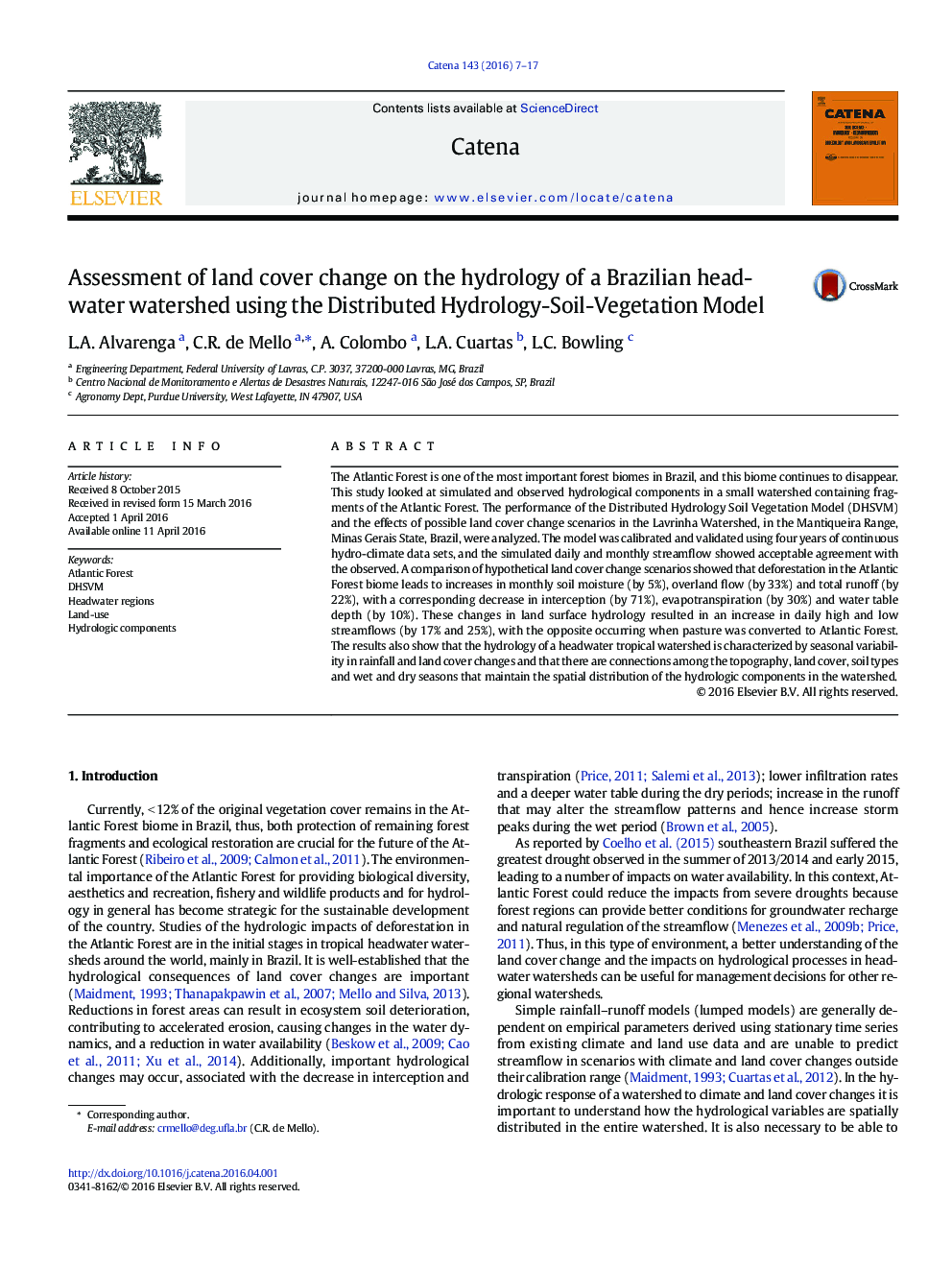| کد مقاله | کد نشریه | سال انتشار | مقاله انگلیسی | نسخه تمام متن |
|---|---|---|---|---|
| 6407848 | 1629209 | 2016 | 11 صفحه PDF | دانلود رایگان |
- DHSVM was performed to a tropical headwater basin in Southeastern Brazilian.
- Hydrologic impacts from land-use scenarios were carried out with DHSVM.
- Upper Atlantic Forest deforestation generated the worst impacts on hydrology.
The Atlantic Forest is one of the most important forest biomes in Brazil, and this biome continues to disappear. This study looked at simulated and observed hydrological components in a small watershed containing fragments of the Atlantic Forest. The performance of the Distributed Hydrology Soil Vegetation Model (DHSVM) and the effects of possible land cover change scenarios in the Lavrinha Watershed, in the Mantiqueira Range, Minas Gerais State, Brazil, were analyzed. The model was calibrated and validated using four years of continuous hydro-climate data sets, and the simulated daily and monthly streamflow showed acceptable agreement with the observed. A comparison of hypothetical land cover change scenarios showed that deforestation in the Atlantic Forest biome leads to increases in monthly soil moisture (by 5%), overland flow (by 33%) and total runoff (by 22%), with a corresponding decrease in interception (by 71%), evapotranspiration (by 30%) and water table depth (by 10%). These changes in land surface hydrology resulted in an increase in daily high and low streamflows (by 17% and 25%), with the opposite occurring when pasture was converted to Atlantic Forest. The results also show that the hydrology of a headwater tropical watershed is characterized by seasonal variability in rainfall and land cover changes and that there are connections among the topography, land cover, soil types and wet and dry seasons that maintain the spatial distribution of the hydrologic components in the watershed.
Journal: CATENA - Volume 143, August 2016, Pages 7-17
